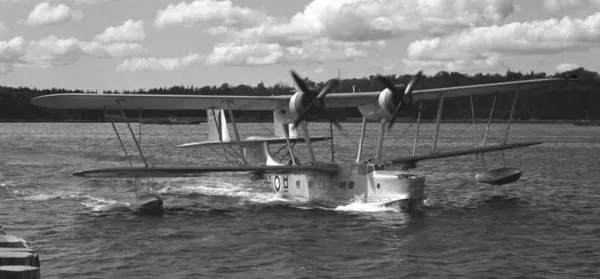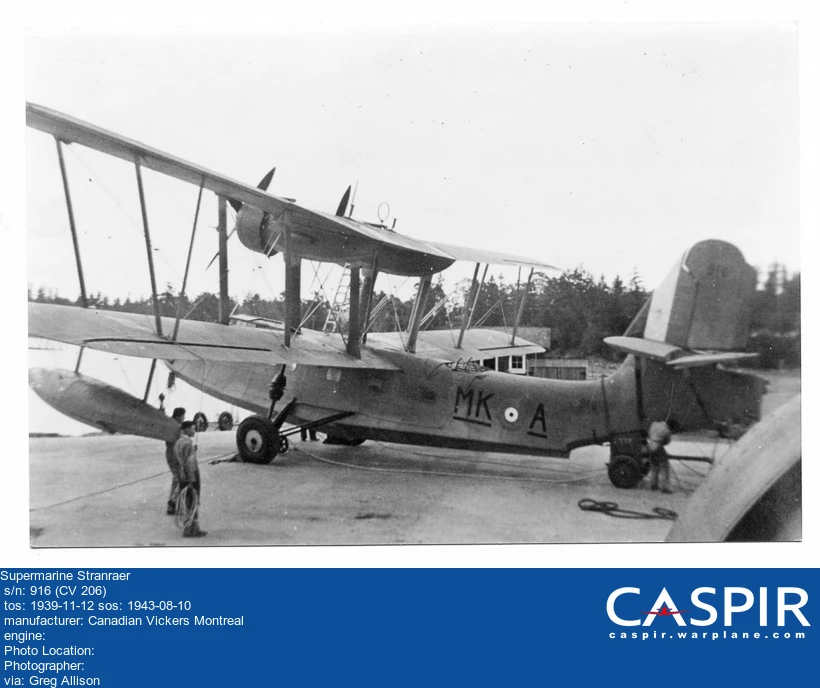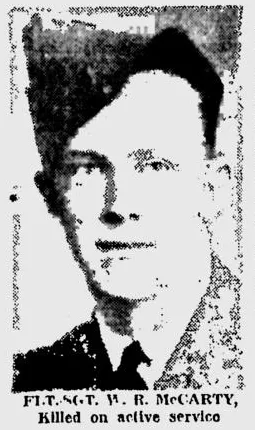Supermarine Stranraer

Canadian Vickers Stranraer, RCAF (Serial No. 913), CV190, coded QN-B, No. 5 (Bomber Reconnaissance) Squadron, RCAF Station Dartmouth, Nova Scotia, sometime between 1938 and 1941.
The Supermarine Stranraer was a flying boat designed and built by the British Supermarine Aviation Works company. It was developed during the 1930s on behalf of its principal operator, the Royal Air Force (RAF). Derived from the Supermarine Scapa, the aircraft's design was heavily shaped by Specification R.24/31. While initially rejected by the Air Ministry, Supermarine persisted with development as a private venture under the designation Southampton V. During 1933, a contract was placed for a single prototype; it was around this time that the type received the name Stranraer. First flown on 24 July 1934, the Stranraer entered frontline service with the RAF during 1937; most examples of the type were in service by the outbreak of the Second World War.
The Stranraer's typically undertook anti-submarine and convoy escort patrols during the early years of the conflict. During March 1941, it was withdrawn from frontline service, but continued to be operated in a training capacity up until October 1942. In addition to the British-built aeroplanes, the Canadian Vickers company in Montreal, Quebec, also manufactured 40 Stranraers under licence for the Royal Canadian Air Force (RCAF). These Canadian Stranraers served in anti-submarine and coastal defence capacities on both Canada's Atlantic and Pacific coasts, and were in regular service until 1946. Following their withdrawal from military service, many ex-RCAF Stranraers were sold off to fledgeling regional airlines, with whom they served in various commercial passenger and freighter operations into the 1950s.
The Royal Canadian Air Force (RCAF) Stranraers were exact equivalents of their RAF counterparts. In Canadian service, they were usually employed in coastal patrol against submarine threats in a similar role to the British Stranraers. The Canadian Vickers-built Stranraers served with the RCAF throughout the war, the last example being withdrawn on 20 January 1946. Wikipedia
 Wikipedia Supermarine Stanraer
Wikipedia Supermarine Stanraer
CASPIR Aircraft Groups:
RCAF On Strength (40), Canadian Aircraft Losses (7)Stranraer 916
Served with Test and Development Flight at RCAF Station Rockcliffe, dates unknown. Operated by No. 5 (BR) Squadron, RCAF Station Dartmouth, NS, 1938 to 1941. Coded "QN*P". Category D damage while there. Operated by No. 6 (BR) Squadron, from RCAF Station Alliford Bay, BC, in 1942 to 1943. With No. 9 (BR) Squadron at Bella Bella, BC in summer of 1942, coded "KA*A". With No. 3 Operational Training Unit at RCAF Station Patricia Bay, BC when it crashed at sea in the Stuart Channel, near Crofton, on 18 July 1943. Two fatalities.
1939-11-12 Taken on Strength 2019-08-20
1943-July-16 Accident: 3 Operational Training Unit Loc: Crofton British Columbia Names: Bell | Chesney | Hertslet | Larsen | McCarty | Rogers
1943-08-10 Struck off Strength 2019-08-20






 Canadian Virtual War Memorial
Canadian Virtual War Memorial Commonwealth War Graves Commission
Commonwealth War Graves Commission Find-A-Grave.com
Find-A-Grave.com Library and Archives Canada Service Files (may not exist)
Library and Archives Canada Service Files (may not exist) San Diego, California, USA
San Diego, California, USA

 Harold A Skaarup Web Page
Harold A Skaarup Web Page RCAF.info - RCAF Station Patricia Bay B.C.
RCAF.info - RCAF Station Patricia Bay B.C.